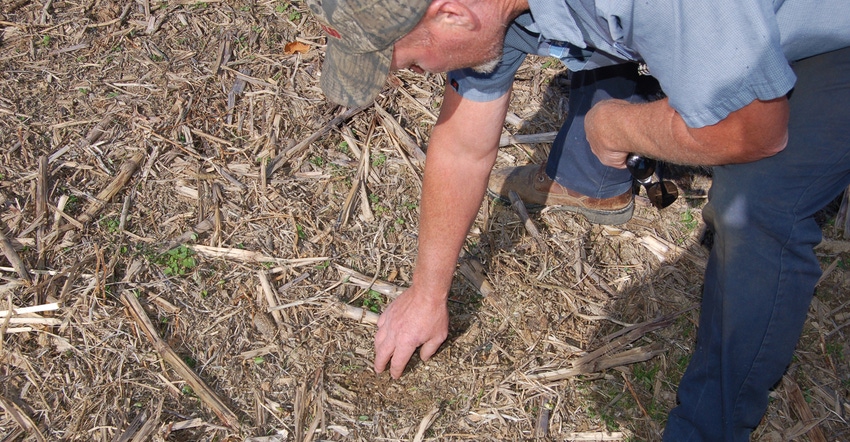
Roger and Nick Wenning, Greensburg, Ind., have no-tilled and used cover crops for a long time. Kevin Horstman, a neighbor who farms with his family, including his wife, Diana, brother-in-law Steve Gauck and father-in-law, Tim Gauck, moved into continuous no-till and cover crops recently. Both the Wennings and the Horstmans are the first to acknowledge they’re still learning and experimenting.
Here are seven things they’ve learned or observed so far:
1. Cover crop seed variety matters. Not all annual ryegrass varieties are equal. Roger began testing various varieties in his own small plots over a decade ago. “Bounty seems to be a variety that works well here,” he says. “In 9 years out of 10, it will make it through the winter just fine. Some varieties of annual ryegrass aren’t adapted to our winters.”
2. “Variety not stated” is “buyer beware.” If you purchase seed of any cover crop where the tag says “variety not stated,” you run the risk of getting a variety not suited for your climate, Roger notes. Especially if it’s annual ryegrass, you could be buying a variety that won’t make it through the winter as well as you like.
3. There is no right or wrong way to establish a cover crop. The Wennings have some cover crops aerial seeded. In other situations, they apply cover crops with a Val-Mar air seeder mounted on a Phoenix harrow, which tends to lightly work in the seed.
Horstman prefers to drill seed, if possible; he drilled cereal rye last fall.
4. There’s a secret to planting green. It may seem obvious, but Nick insists that setting the planter correctly and making sure it’s in good condition is the key. “You need enough downforce on planter units, and the opener discs need to be in good shape,” Nick says. “Then you need closing wheels which can get though the material but yet close the seed trench.”
5. Plan termination and weed control before planting green. “We plant non-GMO corn, so we don’t have the option of coming back with glyphosate,” Horstman says. “We prefer to be ready to spray right behind the planter. It’s not always possible, and you have some time to spray after planting, depending on what herbicides you’re applying. But you need to have a plan in mind and spray as soon as you can.”
6. Own your own sprayer. If you’re going to plant green, the Wennings believe it’s important to have your own sprayer so you can make the application when the window presents itself.
“We feel the same way,” Horstman says. “We have our own self-propelled sprayer, too, so we have more flexibility.”
7. Experiment on a small scale. Test different species and practices before using them operation-wide. The Wennings find barley can be a good fit in some situations. It doesn’t get as tall as rye in a spring like 2019, and barley roots offer a different feedstock to microbes compared to wheat.
The Wennings also have access to a 6-foot crimper. Some people who no-till green crimp to terminate cover crops instead of applying a burndown herbicide. “It works on cereal rye and may work on some other species, but it won’t work on all cover crops,” Nick says. “We have it so we can try it and see where it works and where it doesn’t.”
Read more about:
No tillAbout the Author(s)
You May Also Like




